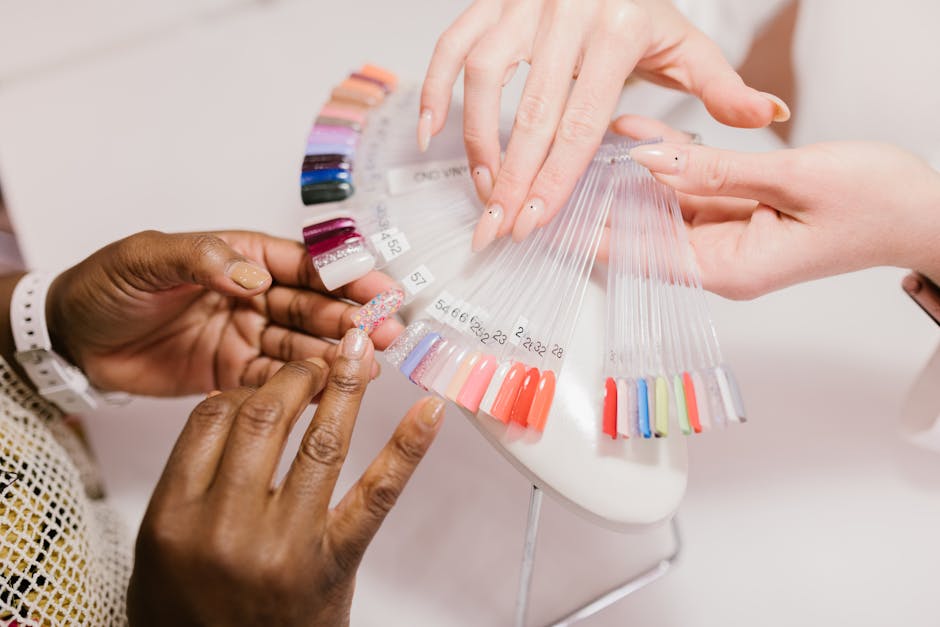
In a world where logos reign supreme and branding is everything, finding the perfect balance between cultural relevance and visual appeal is like trying to juggle flaming swords while riding a unicycle – challenging, potentially dangerous, and definitely not recommended for the faint of heart. Welcome to the wild and wacky world of logo design, where understanding cultural nuances can mean the difference between a thumbs-up from customers and a face palm from critics. Let’s dive into the art of striking the right balance: cultural considerations in logo design.
Understanding the Target Audience
So you want to understand your target audience, eh? Well, let me tell you, it’s not as easy as counting how many likes you get on your latest cat meme post. No, no, no. Your target audience is a mysterious and elusive creature, kind of like a unicorn but with less rainbows and more data analytics.
First things first, you need to figure out who exactly your target audience is. Are they young, hip millennials who spend their days taking selfies and watching TikToks? Or are they middle-aged moms who just want a moment of peace and quiet to enjoy their glass of wine at the end of a long day? Once you’ve nailed down who you’re targeting, it’s time to get inside their heads. And no, I don’t mean literally – that’s illegal in most states.
**Here are a few tips to help you understand your target audience better:**
- Do some good old-fashioned stalking (on social media, of course).
- Survey them like you’re a 90s game show host asking questions about their favorite color.
- Get feedback from your existing customers - they’re like your own personal focus group, but hopefully less judgmental.
Remember, understanding your target audience is like trying to solve a Rubik’s Cube blindfolded – it takes time, patience, and a whole lot of colorful language. But once you crack the code, you’ll be one step closer to world domination. Or at least selling more of your product. Same thing, really.
Researching Cultural Symbols and Meanings
Sometimes can feel like diving into a rabbit hole filled with hidden treasures and surprises. The journey of uncovering the significance behind these symbols is like embarking on a quest to decode ancient mysteries. Here are some tips to help you navigate through the fascinating world of cultural symbols:
– **Dive deep into history**: To truly understand the meaning behind a cultural symbol, you must first immerse yourself in the rich tapestry of history. Explore the origins of the symbol, its evolution over time, and the context in which it was used. History is like a treasure map that will guide you on your quest for knowledge.
– **Consult the experts**: Sometimes, the best way to unravel the mysteries of a cultural symbol is to seek guidance from those who have dedicated their lives to studying it. Connect with scholars, anthropologists, and historians who can provide valuable insights and interpretations. Their expertise will shine a light on the darkest corners of symbolism.
– **Tap into your intuition**: While research and expertise are essential, don’t discount the power of your intuition. Sometimes, a gut feeling or a sudden revelation can lead you to a deeper understanding of a cultural symbol. Trust your instincts and let your imagination soar as you dive into the realm of symbolism.
– **Embrace the unknown**: The beauty of lies in the endless possibilities and hidden truths waiting to be discovered. Embrace the uncertainty and be open to unexpected revelations along the way. Remember, the journey of exploration is just as important as the destination. So, strap on your curiosity helmet and embark on a thrilling adventure into the world of cultural symbolism!
Choosing Colors Wisely
When it comes to choosing colors for your home, it’s important to think outside the box. Who says you can’t have a neon pink kitchen or a lime green bathroom? Well, maybe your significant other… But hey, compromise is key, right?
One important factor to consider is the psychology of color. For example, did you know that blue has a calming effect? Perfect for a bedroom, unless you want to fall asleep every time you walk in. On the other hand, red is known to stimulate the appetite. So, why not paint your dining room walls a vibrant shade of candy apple red and blame your never-ending hunger on the color scheme?
Another fun idea is to create a color theme for each room in your home. For example, the living room could be a cozy autumn palette of burnt orange, golden yellow, and rich brown. And the bathroom? Well, a tropical oasis of turquoise, coral, and sunshine yellow sounds like the perfect place to relax and unwind. Who needs a spa day when you have your very own colorful retreat?
Remember, the key to is to have fun with it. Don’t be afraid to mix and match different shades and experiment with bold combinations. After all, life’s too short to live in a dull, monochromatic world. Embrace the rainbow and let your personality shine through in every hue you choose!

Incorporating Traditional Design Elements
So you want to dive into the world of traditional design, eh? Well, get ready to whisk yourself away to a land where ornate patterns and intricate details reign supreme!
When into your space, think grandeur, opulence, and a touch of whimsy. Embrace rich colors, luxurious fabrics, and statement pieces that make a bold statement.
Don’t be afraid to mix and match different traditional styles to create a space that is uniquely yours. Whether it’s blending English country with French provincial or Victorian with Moorish influences, the key is to have fun and let your creativity shine!
Remember, traditional design is all about paying homage to the past while adding your own modern twist. So go ahead, embrace the beauty of intricate moldings, elegant furniture, and timeless motifs. Your space will thank you for it!

Avoiding Cultural Appropriation
So you want to avoid cultural appropriation, eh? Good for you, you cultural connoisseur, you! Here are some tips to keep you out of hot water and looking woke as heck:
- Do your research: Before diving headfirst into a new trend or style, take a moment to educate yourself on its origins and significance. The last thing you want is to be caught wearing a piece of sacred jewelry without knowing the first thing about it!
- Support local artists: Instead of buying knock-offs of traditional clothing or accessories, why not purchase authentic items from local artisans? Not only will you be supporting the culture, but you’ll also be rocking some truly unique pieces.
- Be mindful of stereotypes: Just because you see a certain group of people wearing a particular style doesn’t mean you should appropriate it without understanding its deeper meaning. Avoid perpetuating harmful stereotypes by embracing cultural elements with respect and thoughtfulness.
Remember, cultural appreciation is all about honoring and celebrating different traditions and practices without overstepping boundaries or disrespecting the people who hold them dear. So go forth, my friend, and spread love, not appropriation!
Testing for Cultural Sensitivity
So, you think you’re culturally sensitive, huh? Well, let’s put your cultural knowledge to the test! Here are a few ways to determine just how culturally sensitive you really are:
First up, let’s test your knowledge of different cultures around the world. Can you identify which country celebrates Diwali, the Festival of Lights? Or how about the significance of the Chinese New Year? If you can’t answer these questions, you might need to brush up on your global cultural awareness.
Next, let’s see how well you do with food from different cultures. Are you brave enough to try haggis, balut, or durian fruit? If you turn up your nose at the mere mention of these dishes, you might need to expand your culinary horizons.
Lastly, let’s test your ability to appreciate and respect cultural traditions. Can you do the Hula dance, perform a Japanese tea ceremony, or participate in a Native American powwow with grace and respect? If not, it’s time to open your mind (and your heart) to the wonderful diversity of the world around you.
FAQs
Can I just use Google Translate to create a logo that incorporates different cultures?
No way, José! Google Translate is notorious for its wonky translations and lack of cultural nuances. Take the time to do your research and consult with native speakers for accurate and meaningful design choices.
How can I avoid cultural appropriation when designing a logo?
Avoid using sacred symbols or designs that hold deep cultural significance without understanding their context. Be respectful of the culture you’re drawing inspiration from and seek permission or collaboration if necessary. When in doubt, always err on the side of caution.
Can I combine elements from multiple cultures in one logo?
Sure, as long as it’s done thoughtfully and with respect. Just remember to consider the potential implications of merging different cultural symbols and ensure that the final design is cohesive and meaningful.
What are some common cultural symbols to avoid in logo design?
Avoid using religious symbols, national flags, or tribal patterns without proper understanding and authorization. You don’t want to offend anyone or misrepresent a culture unintentionally.
How can I incorporate my own culture into a logo while appealing to a global audience?
Find elements of your own culture that are universal or impactful, such as nature motifs, geometric patterns, or traditional craftsmanship. Blend these with modern design elements to create a logo that resonates with people from all backgrounds.
In Conclusion: Let Your Logo Do the Talking!
As we wrap up our discussion on cultural considerations in logo design, remember that balance is key. Make sure your logo speaks to your audience in a language they understand, while still representing the core values of your brand. So go forth, brave designer, and strike the perfect harmony between tradition and modernity, familiarity and novelty. And remember, when in doubt, just add more cowbell! Happy designing!









